What to do with a burnt finger. Treating First-Degree Burns: Effective Home Remedies and Medical Care
How to identify a first-degree burn. What are the immediate steps to take for a minor burn. When should you seek medical attention for a burn. What are the most effective home remedies for burnt fingers. How long does it take for a first-degree burn to heal. What are the potential complications of untreated burns. How can you prevent accidental burns in daily life.
Understanding First-Degree Burns: Causes and Symptoms
First-degree burns are the mildest form of burn injuries, affecting only the outer layer of skin (epidermis). These burns are common household accidents that can occur from brief contact with hot objects, liquids, or even sunburn. Understanding the nature of these burns is crucial for proper treatment and prevention.
Typical causes of first-degree burns include:
- Touching hot cookware or appliances
- Spilling hot liquids
- Brief exposure to open flames
- Excessive sun exposure
- Contact with hot steam
Recognizing the symptoms of a first-degree burn is essential for determining the appropriate course of action. The primary indicators include:
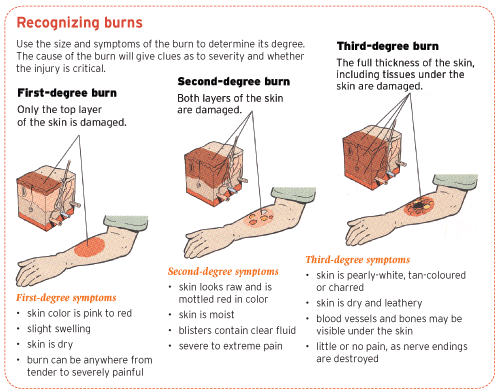
- Redness of the affected area
- Mild to moderate pain
- Slight swelling
- Dry, peeling skin as the burn heals
Are first-degree burns always painful? While pain is a common symptom, the intensity can vary depending on the individual’s pain threshold and the extent of the burn. Some people may experience more discomfort than others, even with similar burn severity.
Immediate First Aid for Burnt Fingers
When you accidentally burn your finger, quick action can significantly reduce pain and promote faster healing. Follow these steps immediately after sustaining a first-degree burn:
- Remove the source of heat to prevent further damage.
- Cool the burn under cool (not cold) running water for 10-20 minutes.
- Gently pat the area dry with a clean, soft cloth.
- Apply a thin layer of aloe vera gel or an over-the-counter burn cream.
- Cover the burn loosely with a sterile gauze bandage.
Should you use ice on a burnt finger? Contrary to popular belief, applying ice directly to a burn can cause further damage to the skin tissue. Stick to cool water instead, as it provides relief without the risk of additional harm.

Home Remedies for Minor Burns
Many effective home remedies can aid in the healing process of first-degree burns. These natural treatments can provide relief and promote skin regeneration:
- Aloe vera gel: Known for its soothing and anti-inflammatory properties
- Honey: Has natural antibacterial qualities and can help prevent infection
- Cool compress: Reduces pain and swelling when applied gently
- Coconut oil: Moisturizes the skin and may speed up healing
- Lavender essential oil: Has analgesic and antimicrobial properties (dilute before use)
Can vinegar help with burn treatment? While some people swear by vinegar for burns, there’s limited scientific evidence to support its effectiveness. It’s best to stick to proven remedies and consult a healthcare professional if you’re unsure.
Over-the-Counter Treatments for Burn Relief
In addition to home remedies, several over-the-counter products can effectively treat first-degree burns:
- Burn gels containing lidocaine for pain relief
- Antibiotic ointments to prevent infection
- Hydrocortisone cream to reduce inflammation
- Non-stick gauze pads for covering the burn
- Oral pain relievers like ibuprofen or acetaminophen
How often should you apply burn cream? Generally, apply burn cream 1-3 times daily or as directed on the product label. Always wash your hands before application and gently pat the area dry afterward.

When to Seek Medical Attention for Burns
While most first-degree burns can be treated at home, certain situations require professional medical care. Seek immediate medical attention if:
- The burn covers a large area of the body
- The burn affects sensitive areas like the face, hands, feet, or genitals
- There are signs of infection (increased pain, redness, swelling, or pus)
- The burn doesn’t show signs of improvement after a few days
- You develop a fever or chills
Is it normal for a burn to blister? While blistering is more common in second-degree burns, some first-degree burns may develop small blisters. If large blisters form or cover a significant area, consult a healthcare provider.
The Healing Process: What to Expect
Understanding the healing timeline for first-degree burns can help manage expectations and ensure proper care throughout recovery:
- Immediate aftermath: Redness, pain, and mild swelling
- Days 1-3: Peak discomfort, possible peeling
- Days 4-7: Reduced pain, continued peeling
- Days 8-14: New skin formation, decreased sensitivity
- Weeks 2-4: Complete healing for most first-degree burns
Can sunlight exposure affect burn healing? Yes, it’s crucial to protect healing burns from direct sunlight. UV rays can cause further damage to sensitive skin and may lead to discoloration or scarring. Use protective clothing or sunscreen once the burn has fully healed.
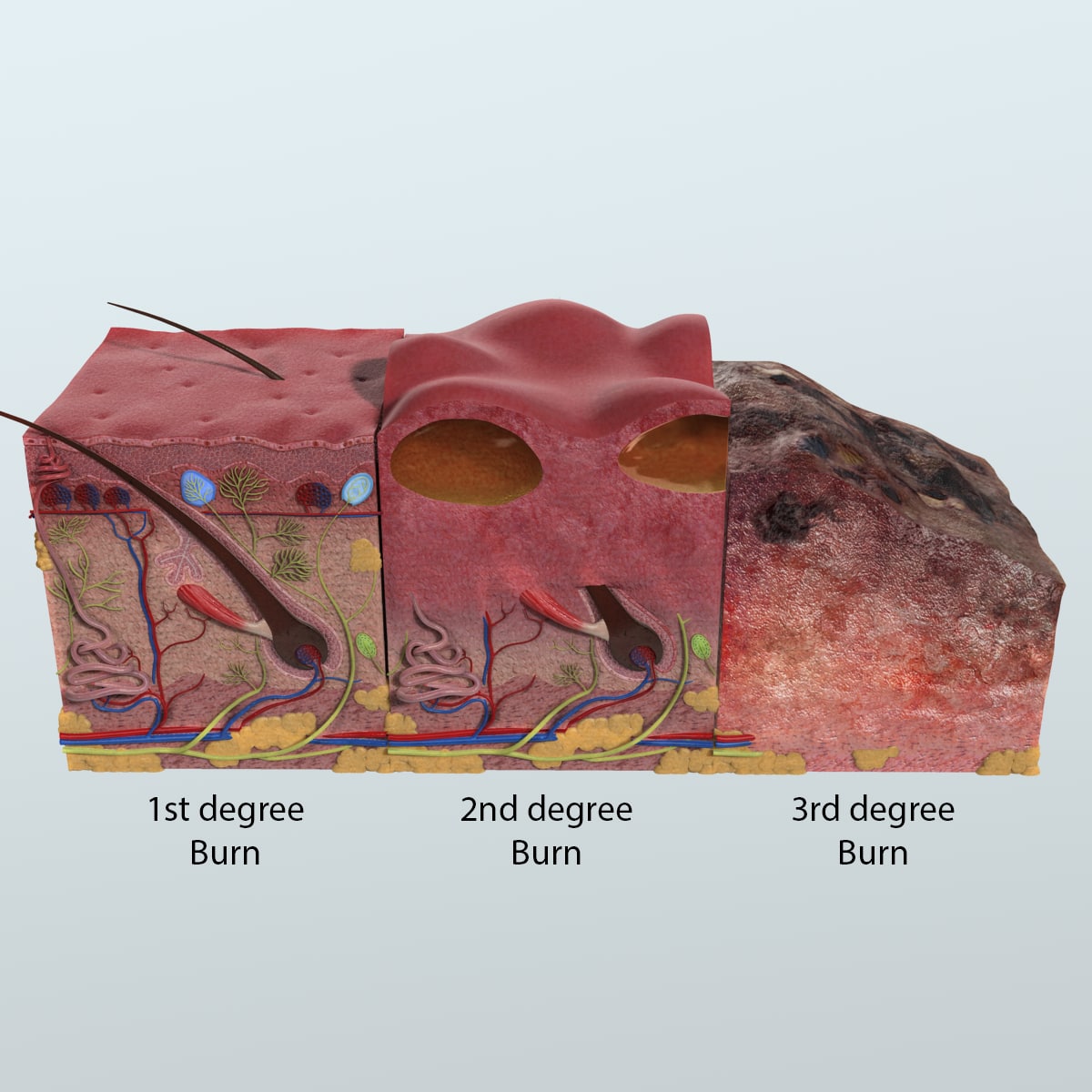
Preventing Accidental Burns in Daily Life
Taking preventive measures can significantly reduce the risk of accidental burns in your day-to-day activities:
- Use oven mitts and pot holders when handling hot cookware
- Keep hot liquids away from the edges of tables and counters
- Set your water heater temperature to 120°F (49°C) or lower
- Use caution when ironing or using hair styling tools
- Apply sunscreen and wear protective clothing when outdoors
- Keep children away from the stove and other heat sources
How can you make your kitchen more burn-safe? Install anti-scald devices on faucets and showerheads, use back burners when cooking, and turn pot handles inward to prevent accidental spills.
Burn Safety for Children
Children are particularly vulnerable to burn injuries due to their curiosity and developing motor skills. Implement these additional safety measures to protect young ones:
- Never leave children unattended near hot appliances or open flames
- Store matches and lighters out of reach
- Teach children about fire safety and the dangers of hot objects
- Use cordless kettles or keep cords tucked away
- Test bath water temperature before placing a child in the tub
What’s the best way to educate children about burn safety? Use age-appropriate language and visual aids to explain the dangers. Role-playing scenarios and interactive demonstrations can help reinforce the importance of burn prevention.
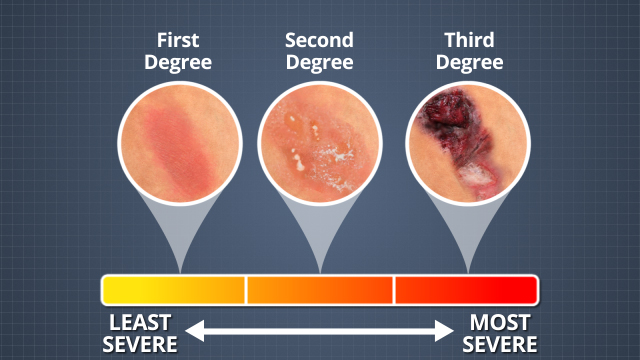
Long-Term Care and Skin Protection After Burns
Even after a first-degree burn has healed, the affected skin may require ongoing care and protection:
- Keep the healed area moisturized to prevent dryness and itching
- Use sunscreen with a high SPF when exposing the area to sunlight
- Avoid harsh soaps or exfoliants that may irritate sensitive skin
- Massage the area gently to improve circulation and reduce stiffness
- Monitor for any changes in skin color or texture
Can burns lead to long-term skin discoloration? Some burns may cause temporary or permanent changes in skin pigmentation. Proper aftercare and sun protection can help minimize these effects, but consult a dermatologist if you have concerns about persistent discoloration.
Nutritional Support for Burn Healing
A balanced diet can promote faster healing and skin regeneration after a burn injury. Focus on consuming:
- Protein-rich foods to support tissue repair
- Vitamin C to aid in collagen production
- Zinc for immune function and wound healing
- Omega-3 fatty acids to reduce inflammation
- Adequate hydration to support overall skin health
Are there specific foods that can speed up burn healing? While no single food can magically heal burns, a diet rich in fruits, vegetables, lean proteins, and healthy fats provides the nutrients necessary for optimal skin repair and regeneration.
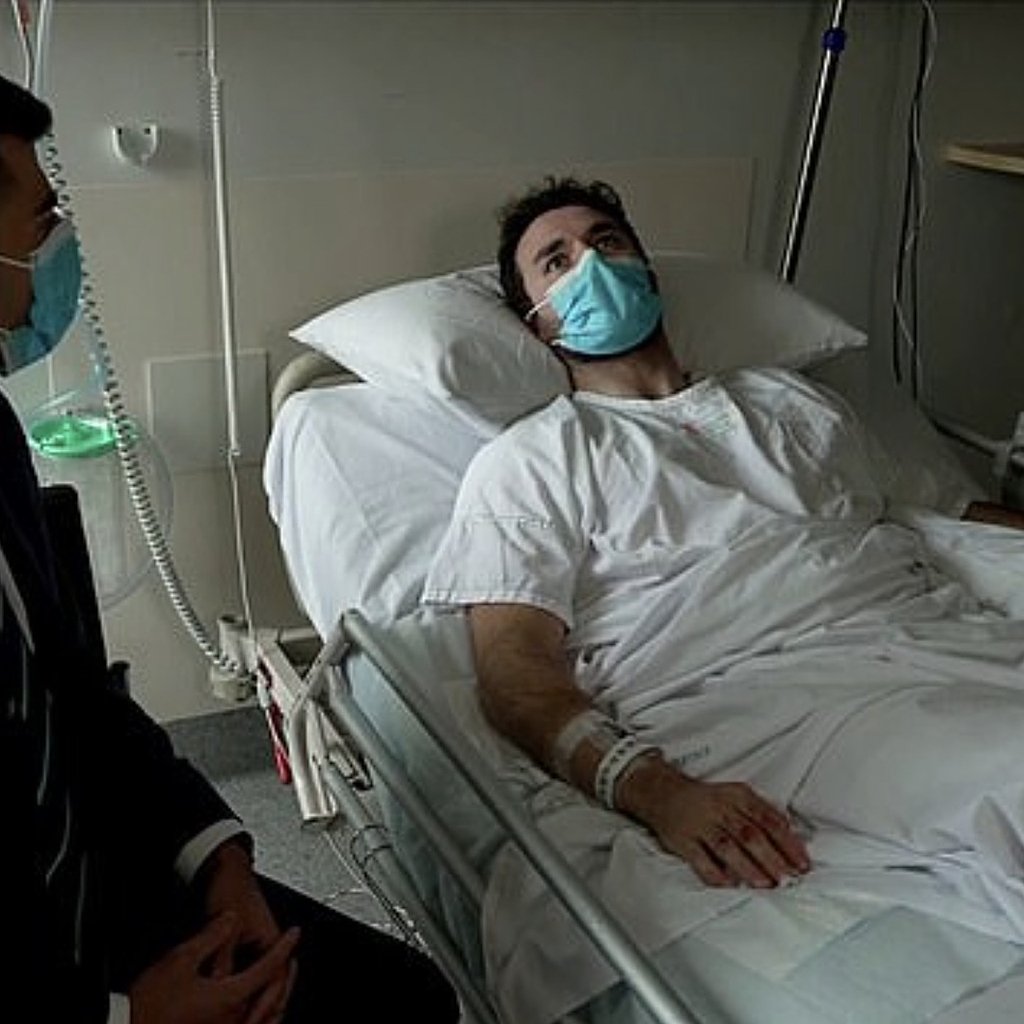
Psychological Impact of Burn Injuries
Even minor burns can have psychological effects, especially if they occur in visible areas or cause significant pain. Be aware of potential emotional responses:
- Anxiety about future burn incidents
- Self-consciousness about appearance during healing
- Frustration with the healing process or limitations
- Fear of engaging in activities that led to the burn
How can you cope with the emotional aftermath of a burn injury? Practice self-compassion, seek support from friends and family, and consider talking to a mental health professional if you’re struggling to cope. Remember that healing takes time, both physically and emotionally.
Supporting Loved Ones with Burn Injuries
If someone close to you has experienced a burn injury, here are ways to offer support:
- Help with daily tasks that may be difficult during healing
- Offer emotional support and a listening ear
- Assist with wound care if needed and comfortable for both parties
- Encourage following medical advice and attending follow-up appointments
- Be patient and understanding throughout the recovery process
What’s the best way to show empathy to someone recovering from a burn? Listen without judgment, validate their feelings, and offer practical help. Avoid minimizing their experience or pushing them to “get over it” quickly.
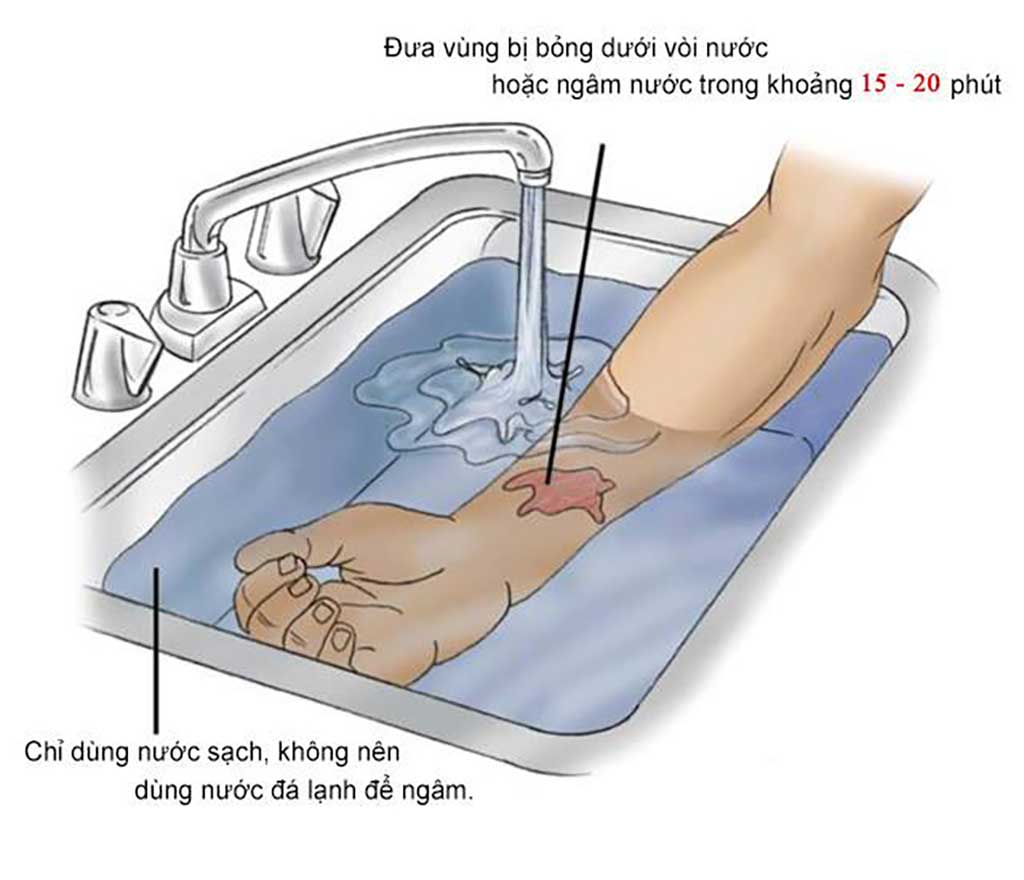
Advancements in Burn Treatment Research
While first-degree burns are typically manageable with home care, ongoing research continues to improve treatment options for all types of burns:
- Development of advanced wound dressings that promote healing
- Exploration of stem cell therapies for severe burns
- Innovations in pain management techniques
- Research into scar reduction and skin regeneration methods
- Improvement of burn prevention education and strategies
How might future technologies change burn treatment? Emerging technologies like 3D-printed skin grafts and smart bandages that monitor healing progress could revolutionize burn care, especially for more severe injuries.
The Role of Telemedicine in Burn Care
Telemedicine is becoming increasingly important in burn treatment, offering several benefits:
- Remote assessment of burn severity
- Follow-up consultations without in-person visits
- Access to specialist advice for patients in remote areas
- Reduced risk of infection for vulnerable patients
- Convenience for patients with limited mobility
Can all burns be assessed through telemedicine? While telemedicine is valuable for initial triage and follow-up care, severe burns or those showing signs of complications should still be evaluated in person by a healthcare professional.
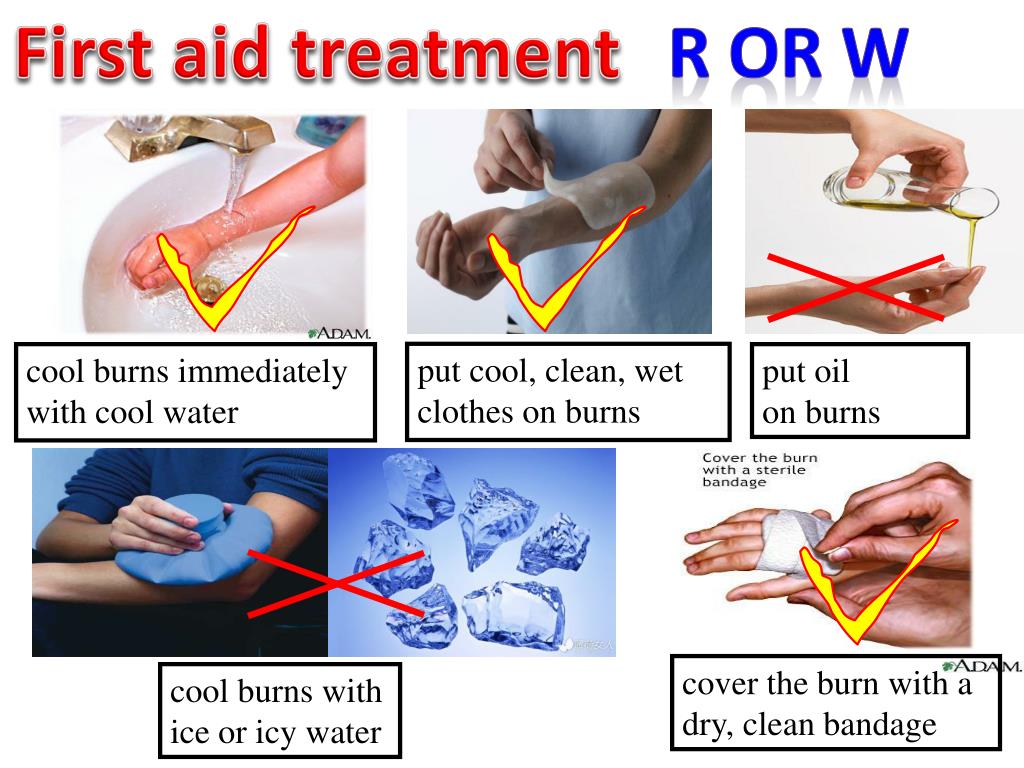
Cultural Perspectives on Burn Treatment
Different cultures have various traditional remedies and beliefs about burn treatment. While some of these methods may have merit, it’s essential to approach them critically:
- Use of potato slices in some European traditions
- Application of turmeric paste in Indian folk medicine
- Egg white treatments in Latin American cultures
- Aloe vera use across multiple cultures
- Various herbal poultices in traditional Chinese medicine
Should traditional remedies be used alongside modern treatments? While some traditional methods may offer benefits, it’s crucial to consult with a healthcare provider before combining treatments to ensure safety and efficacy.
Global Efforts in Burn Prevention and Education
Worldwide initiatives aim to reduce burn incidents and improve treatment outcomes:
- WHO Global Burn Prevention Program
- International Society for Burn Injuries education campaigns
- National fire safety awareness programs
- Community-based burn prevention workshops
- Incorporation of burn safety into school curricula
How can individuals contribute to global burn prevention efforts? Participate in local safety awareness events, support burn prevention charities, and share accurate information about burn treatment and prevention within your community.
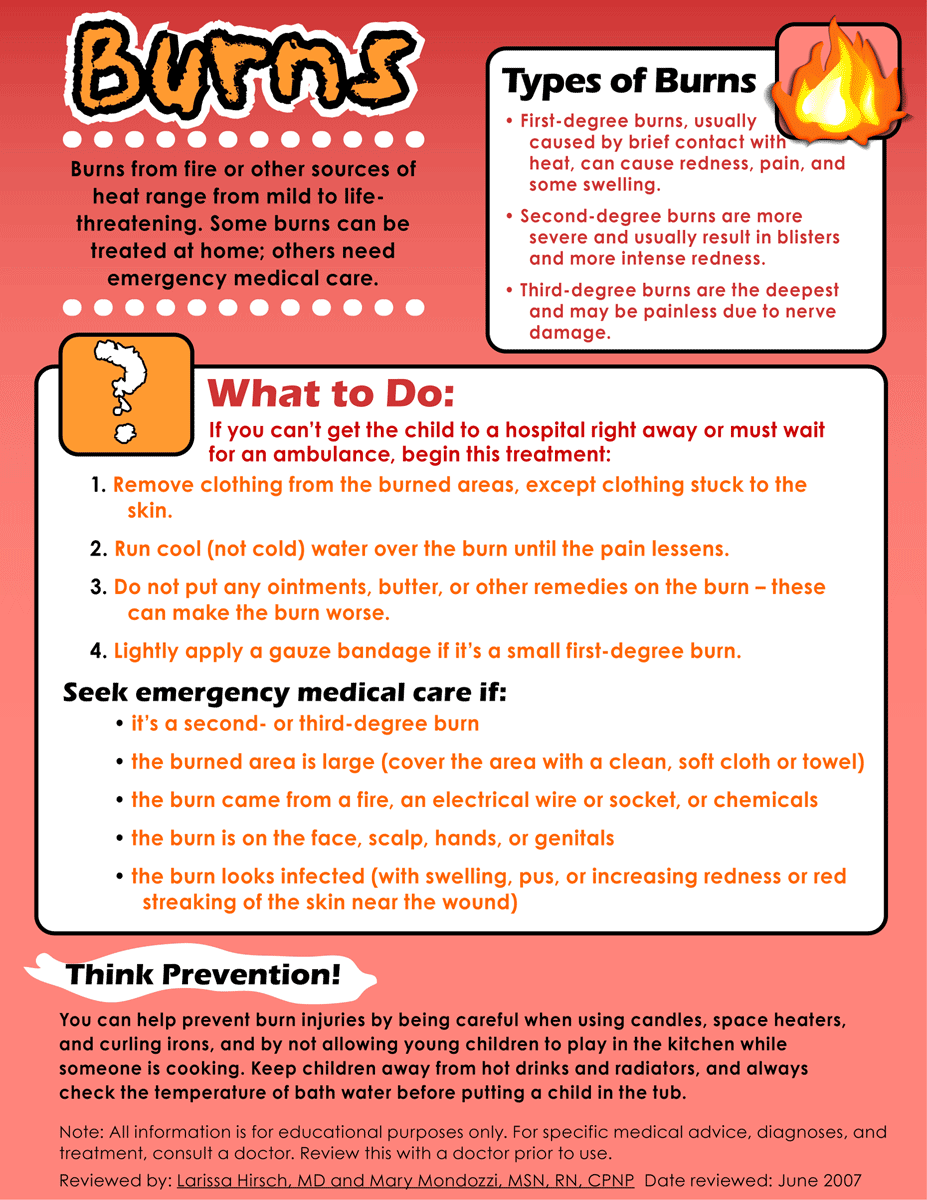
How to treat a first-degree, minor burn
Diseases & conditions
-
Coronavirus Resource Center
-
Acne
-
Eczema
-
Hair loss
-
Psoriasis
-
Rosacea
-
Skin cancer
-
A to Z diseases
-
A to Z videos
- DIY acne treatment
- How dermatologists treat
- Skin care: Acne-prone skin
- Causes
- Is it really acne?
- Types & treatments
- Childhood eczema
- Adult eczema
- Insider secrets
- Types of hair loss
- Treatment for hair loss
- Causes of hair loss
- Hair care matters
- Insider secrets
- What is psoriasis
- Diagnosis & treatment
- Skin, hair & nail care
- Triggers
- Insider secrets
- What is rosacea
- Treatment
- Skin care & triggers
- Insider secrets
- Types and treatment
- Find skin cancer
- Prevent skin cancer
- Raise awareness
- Español
Featured
Reduce summertime rosacea flare-ups
The sun, heat, and humidity can all trigger rosacea and lead to flare-ups. Find out how you can enjoy summer while reducing flare-ups.
Find out how you can enjoy summer while reducing flare-ups.
JAK inhibitors: A newer type of medication
JAK inhibitors are helping patients with alopecia areata, eczema/atopic dermatitis, psoriasis, and vitiligo. Here’s what you need to know.
Everyday care
-
Skin care basics
-
Skin care secrets
-
Injured skin
-
Itchy skin
-
Sun protection
-
Hair & scalp care
-
Nail care secrets
- Basic skin care
- Dry, oily skin
- Hair removal
- Tattoos and piercings
- Anti-aging skin care
- For your face
- For your skin routine
- Preventing skin problems
- Bites & stings
- Burns, cuts, & other wounds
- Itch relief
- Poison ivy, oak & sumac
- Rashes
- Shade, clothing, and sunscreen
- Sun damage and your skin
- Aprenda a proteger su piel del sol
- Your hair
- Your scalp
- Nail care basics
- Manicures & pedicures
Featured
Practice Safe Sun
Everyone’s at risk for skin cancer. These dermatologists’ tips tell you how to protect your skin.
These dermatologists’ tips tell you how to protect your skin.
Relieve uncontrollably itchy skin
Find out what may be causing the itch and what can bring relief.
Darker Skin Tones
-
Skin care secrets
-
Hair care
-
Hair loss
-
Diseases & Conditions
- Acne
- Dark spots
- Dry skin
- Light spots
- Razor bumps
- Caring for Black hair
- Scalp psoriasis
- Weaves & extensions
- Central centrifugal cicatricial alopecia
- Frontal fibrosing alopecia
- Hairstyles that pull can cause hair loss
- Acanthosis nigricans
- Acne keloidalis nuchae
- Hidradenitis suppurativa
- Keloid scars
- Lupus and your skin
- Sarcoidosis and your skin
- Skin cancer
- Vitiligo
- More diseases & conditions
Featured
Fade dark spots
Find out why dark spots appear and what can fade them.
Untreatable razor bumps or acne?
If you have what feels like razor bumps or acne on the back of your neck or scalp, you may have acne keloidalis nuchae. Find out what can help.
Cosmetic treatments
-
Your safety
-
Age spots & dark marks
-
Cellulite & fat removal
-
Hair removal
-
Scars & stretch marks
-
Wrinkles
-
Younger-looking skin
Featured
Laser hair removal
You can expect permanent results in all but one area.:max_bytes(150000):strip_icc()/cuts-in-the-kitchen-1298297-v2-352ec3b886624cb9a8e551ae21d2d907.jpg) Do you know which one?
Do you know which one?
Scar treatment
If you want to diminish a noticeable scar, know these 10 things before having laser treatment.
Botox
It can smooth out deep wrinkles and lines, but the results aren’t permanent. Here’s how long botox tends to last.
Public health programs
-
Skin cancer awareness
-
Free skin cancer screenings
-
Kids’ camp
-
Good Skin Knowledge
-
Shade Structure grants
-
Skin Cancer, Take a Hike!™
-
Awareness campaigns
-
Flyers & posters
-
Get involved
- Lesson plans and activities
- Community grants
Featured
Free materials to help raise skin cancer awareness
Use these professionally produced online infographics, posters, and videos to help others find and prevent skin cancer.
Dermatologist-approved lesson plans, activities you can use
Free to everyone, these materials teach young people about common skin conditions, which can prevent misunderstanding and bullying.
Find a dermatologist
-
Find a dermatologist
-
What is a dermatologist?
-
FAAD: What it means
-
How to select a dermatologist
-
Your digital health
-
Prior authorization
-
Dermatologists team up to improve patient care
- Finding accurate health information
- Health apps
- Wearable medical devices
- Telemedicine
- Protect your information
Featured
Find a Dermatologist
You can search by location, condition, and procedure to find the dermatologist that’s right for you.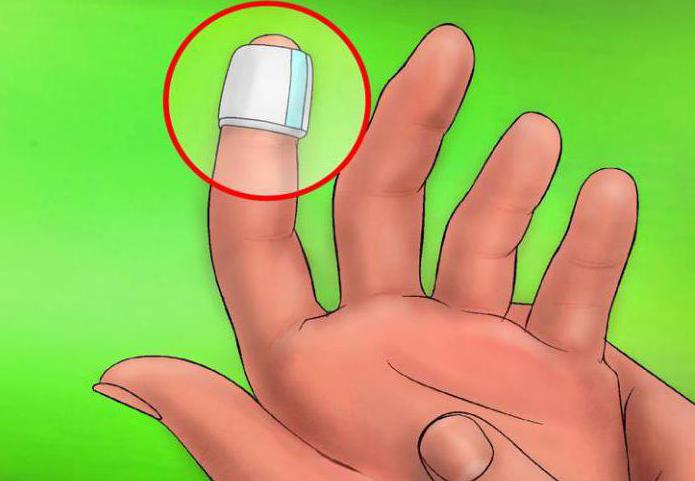
What is a dermatologist?
A dermatologist is a medical doctor who specializes in treating the skin, hair, and nails. Dermatologists care for people of all ages.
First aid for treating minor burns
Speaking of Health
Topics in this Post
- Safety
- Emergency Medicine
It’s easy to get a burn on your arm or hand from a hot pan while cooking. Extremely hot water — over 110 degrees Fahrenheit — can cause burns, as can stoves, fires, hot food and the sun.
Most burns are minor and you can manage them at home, but it’s important to know the signs of a more serious burn. More severe burns can cause serious complications and may require emergency treatment. One of the most important things to do is to act fast.
Burns cause different degrees of damage.

- A first-degree burn is minor. It affects only the outer layer of the skin.
- A second-degree burn affects the second layer of skin, called the dermis.
- A third-degree burn reaches into the deeper layers beneath the skin.
Treating a minor burn
There are many myths about how to treat a minor burn. Your questions may include: Should you pop the blister? Do you use hot or cold water on it? Is it good to cover a burn with a bandage?
Follow these tips for treating a minor burn:
- Place the burned area under running water slightly colder than room temperature for 10 to 15 minutes or until the pain eases. Or put a cool, clean, damp cloth on the burn.
- Be aware that the burned area may swell. Remove tight items, such as rings or clothing, from the burned area as quickly as possible.
- Do not break a blister if it’s bigger than your little fingernail. If the blister does break, clean it with mild soap and water.
 Apply an antibiotic ointment, and cover the area with a bandage or gauze.
Apply an antibiotic ointment, and cover the area with a bandage or gauze. - Applying moisturizer, aloe vera gel or other pain relief gels may provide temporary relief. Don’t slather on butter — sometimes mentioned as a home remedy — because it retains heat and could be contaminated with bacteria.
- Keep the wound covered with a loose dressing to help it stay clean and decrease pain.
- Ease the pain with an over-the-counter pain reliever, such as Ibuprofen, naproxen or acetaminophen.
- Make sure you’ve had a tetanus shot within the last 10 years because you can get tetanus through an open wound in the skin.
When to see your health care team after a burn
See your health care team if the symptoms worsen or a larger blister develops. Large blisters are best removed by health care professional as they rarely will remain intact on their own.
Also, seek care if the burn:
- Covers a large area of the body
- Has other associated injuries
- Has infection-like signs, such as oozing from the wound, increased pain, redness and swelling
- Involves the area around the eyes, nose or mouth
- Is severe or deep
Call 911 for emergency medical help for major burns.
Get more safety tips:
- Don’t let unsafe toys spoil holiday fun
- Use caution with fireworks
- Should super glue be in your first-aid kit?
- Household safety checklist for senior citizens
Paul Horvath, M.D., practices emergency medicine in Eau Claire and Menomonie, Wisconsin.
Topics in this Post
- Safety
- Emergency Medicine
Related Posts
How to avoid winter slips and falls
Watch out for winter mishaps
Should super glue be in your first-aid kit?
First aid for burns: do’s and don’ts
Health
May 1, 2022
Instructions for different types of burns, which will help you not to lose your head at the moment of danger.
A burn is an injury to the skin or mucous membranes, usually caused by high temperatures, but also by chemicals, radiation or electricity. These injuries are the 4th most common type of injury worldwide.:max_bytes(150000):strip_icc()/illo-treating-smashed-finger-5967c6315f9b582c35643c66.png)
When to see a doctor
Minor burns can be treated at home: they disappear quickly and do not leave marks. But it is necessary to call an ambulance or come to the hospital if:
- the burn was caused by electric shock or lightning;
- it is due to the action of chemicals;
- difficulty breathing or burning of the airways. Symptoms may not appear immediately, so pay attention if the person is coughing, has a sore throat, singed hair on their head or nose;
- the burn affects deep-lying tissues – large blisters on the skin that merge with each other;
- skin looks dry or charred, with white, brown or black patches;
- site of injury swells rapidly;
- the lesion is located on the face, buttocks or genitals;
- a child or an elderly person was burned;
- there are signs of shock – cold and clammy skin, shallow breathing, weak pulse;
- received other injuries;
- have serious chronic diseases, such as diabetes.

First aid for burns
Burns can become inflamed, scarred and even life-threatening, so it is important to act as soon as possible. Action will vary depending on the cause of the injury.
First aid for thermal burns
Most often, such injuries occur at home. For example, because of hot food or drinks, as well as kitchen appliances. To make a small burn go away quickly and leave no traces, proceed as follows:
- Immediately remove the wound away from the hot. The sooner you interrupt the high temperature, the less tissue will be affected.
- Cool the affected area with cool or lukewarm running water.
- Cover with a clean cloth to protect the skin. It is not necessary to tightly wrap the burn site, the bandage should not press.
- For severe pain, you can take an over-the-counter pain reliever such as ibuprofen or paracetamol.
If a burn occurs, for example, during a fire or a traffic accident, there may be other injuries or smoke poisoning.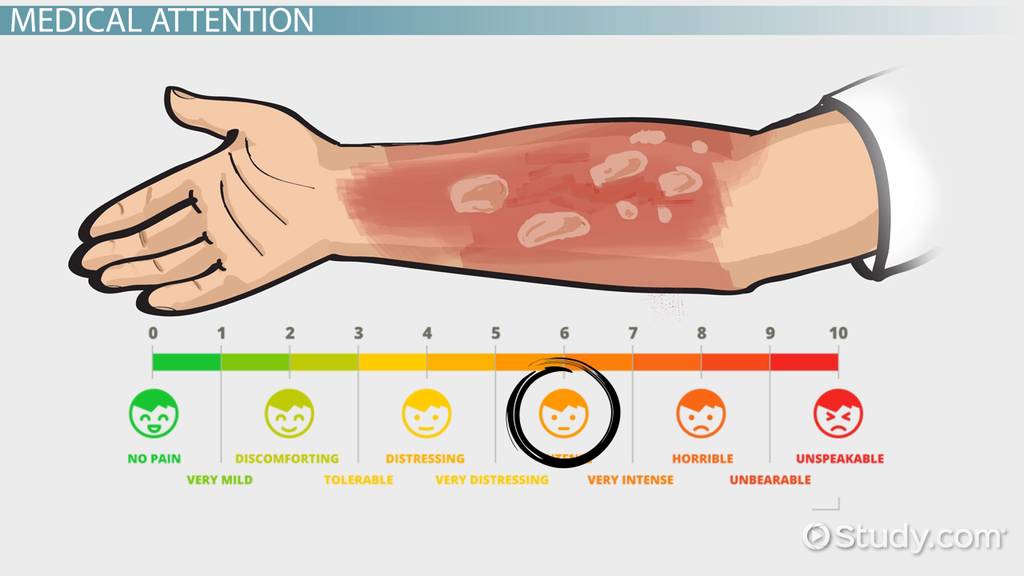 Therefore, in such cases, be sure to call an ambulance and provide first aid.
Therefore, in such cases, be sure to call an ambulance and provide first aid.
- Protect the person from fire, steam or hot objects if you can do so without endangering yourself.
- Check breathing and pulse. Start CPR if necessary.
- Remove any clothing and jewelry near the burn, as injured tissue swells quickly.
- Loosely cover the area with a clean cloth or gauze.
- If possible, raise the wound above the level of the heart.
- Watch for signs of shock.
First aid for sunburn
Even on a cloudy day near the water, you can get sunburned, so doctors recommend not to be in the sun from 10:00 to 16:00, and always use sunscreen the rest of the time. If the skin is red, warm and sore, you should:
- Move to a cool place or shade.
- Take a cool shower or bath to cool down. You can gently wipe the skin with a damp towel.
- Use a light after-sun lotion or gel, such as aloe vera.
- Drink plenty of water to avoid dehydration.

- Protect skin from direct sunlight with clothing until burns are gone.
Usually sunburns disappear on their own, but if they recur or are very painful, it is worth contacting a therapist.
Find out more 🌞
- Do’s and Don’ts for Sunburn
First aid for chemical burns
Burns caused by acids and lyes can be very dangerous. They are not visible, and the solutions penetrate deep into the tissues, so:
- Put on gloves and carefully remove the chemical, remove contaminated clothing. If this is, for example, a T-shirt, then do not try to pull it over your head so as not to accidentally stain your neck, head and hands – it is better to cut the fabric right away.
- Wash the affected area with as much water as possible. Do not rub the solution over the skin, as this may increase the area of the burn.
- As we said above, chemical burns require a mandatory examination by a doctor – seek help.
First aid for electrical injuries
Electric shocks are dangerous in that they may not have any external manifestations and at the same time disrupt the functioning of internal organs. For example, kidney or heart.
For example, kidney or heart.
Here’s what to do in case of electrical damage.
- If you can move on your own, break contact with the current. If you see someone injured from a low-voltage source, such as household appliances, use a wooden stick or other non-conductive material to move the device away from the victim. Do not approach a person who is connected to a high voltage source, such as a transformer, current collector of an electric train, or a conductor rail in a subway.
- Let us remind you that in case of any electrical injury, you should definitely see a doctor. So call an ambulance or go to the hospital.
Definitely not to do for burns
- Do not open blisters to avoid infection.
- Do not try to remove anything stuck to the skin to avoid further injury.
- Do not use ice for cooling: cold also damages tissues, because of it, the injury will only become deeper.
- Do not apply greasy and thick creams, ointments or oils – they will create a film, the skin will not cool under them.

- Do not use “folk remedies”: sour cream, eggs, honey and others. You can introduce an infection, and it will be difficult for doctors to clean the wound.
This article was first published in August 2017. In April 2022, we updated the text.
Read also 🧐
- Why you can’t touch the cow parsnip and what to do if you still touch it0014
- First aid for bleeding: everyone should know this
what to do at home
A hot frying pan, a pot of boiling water, a hot kettle made of stainless steel or glass are items that require special attention. But no matter how careful the housewives try to be, burns in the kitchen still happen when cooking. Usually thermal lesions are minimal, but sensitive and painful, causing severe discomfort.
How to act correctly in such situations? How to help yourself or another family member to reduce burning and pain?
Contents
- First aid for burns
- Folk recipes for burns
- Helpful tips
First aid for burns
or an electric stove of a frying pan or a pot, we wince in pain and reflexively withdraw hand. Even a small mark causes redness and burning, but if the damage is more serious, blisters appear.
Even a small mark causes redness and burning, but if the damage is more serious, blisters appear.
The main thing at this moment is not to get lost and not to worry.
What to do:
- disconnect the appliance from the mains or remove the kettle, pan from the stove. Even if the water has not boiled or the dish has not reached readiness, it is better to cook it later. In the turmoil, even with a slight pain shock, it is easy to forget about cooking, and then the food will burn or the soup will “run away” from the pan;
- quickly apply a cold compress to the affected area or put your hand under a water tap. This will reduce pain, protect healthy tissues from damage. Use a napkin moistened with cool water (10-12 degrees). Ice is not recommended!
Jewelery (rings, bracelets) is removed from the affected hand, otherwise it will be more difficult to do later, treat the burn area with any antiseptic. Solutions of chlorhexidine or furacilin are suitable as a disinfectant.
Solutions of chlorhexidine or furacilin are suitable as a disinfectant.
If the injury site hurts and there is a strong burning sensation, it is recommended to take an analgesic, such as baralgin or any painkillers found in the home medicine cabinet. A compress will help reduce pain – a bandage dipped in a novocaine solution.
It is advisable to have specialized ointments on hand for such cases. Solcoseryl gel, effective and proven by many Bepanten ointment, and Rescuer balm help well. These are universal remedies with a regenerating effect, accelerating healing and helping to tighten damaged areas, and prevent inflammation.
The agent is applied by the open method, treating the skin with the preparation, or a sterile bandage impregnated with ointment, gel is applied (closed method).
Dressing with ointments like tetracycline or levomecol is indicated for thermal burns with small blisters. But in such cases, especially if there is severe pain, burning and chills, it is still better to call the doctors.
Folk recipes for burns
What should I do if I burned my finger with a frying pan, but there are no pharmaceutical preparations at hand? Home-tested folk remedies will help:
- raw potato gruel . A little vegetable is rubbed into a plate, spread “mashed potatoes” on a cloth or bandage and applied to the burned area;
- sea buckthorn oil . Lubricate the skin or apply an impregnated bandage;
- agave juice (aloe) . Fleshy leaves are applied to the redness (with a cut to the skin) or the tissue is soaked with the juice of the medicine plant and a bandage is made.
Effectively relieves pain, reduces burning sensation cabbage leaf . It is applied to the site of injury and secured with a bandage.
The second way: finely chop a cabbage leaf, add raw egg white to the gruel, mix. Apply the mass to the burn site and secure with a bandage. It seems to be simple means, but giving results, and this has been verified by the experience of many housewives.
It seems to be simple means, but giving results, and this has been verified by the experience of many housewives.
Helpful Hints
It is good if the thermal damage is small and is expressed only in mild pain and redness of the skin. After 3-5 days, the injury is forgotten. But if the burn of the hand with a frying pan is strong, blisters have appeared, it is necessary to contact specialists after taking the first measures. This is especially important if the injury is to a child or an elderly person.
Read also
Why tea becomes cloudy in the teapot – 4 main reasons
This causes a sharp temperature drop, which leads to a deterioration in human well-being. It is best to apply a cool compress, which is held for 10-12 minutes; Read also Why the oil in the pan catches fire and how to put it out A few more useful recipes are in the video. It is advisable to have universal ointments or gels in your first-aid kit that help with burns and various household injuries. In severe cases, when the skin turns red, blisters swell, do not self-medicate. Now you know what to do if you get burned on a frying pan, hot iron or kettle. They do not relieve pain and burning, but slow down healing;
They do not relieve pain and burning, but slow down healing;

 Apply an antibiotic ointment, and cover the area with a bandage or gauze.
Apply an antibiotic ointment, and cover the area with a bandage or gauze.

